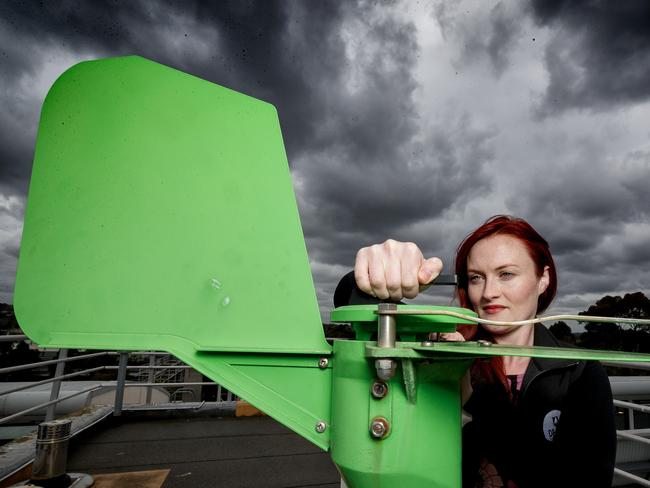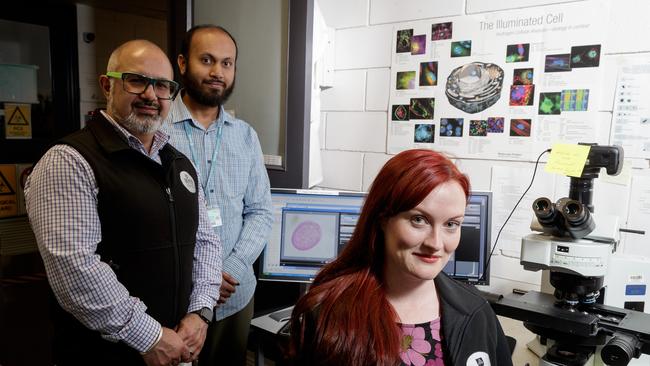Deakin Uni researching for thunderstorm asthma which killed 10 people in 2016
MELBOURNE scientists are stepping up the fight to help hay fever and asthma sufferers prepare for the summer — and prevent a repeat of the deadly 2016 thunderstorm that killed 10 people.
East
Don't miss out on the headlines from East . Followed categories will be added to My News.
KEY research being undertaken to forecast for a risk of thunderstorm asthma — a weather-induced condition that killed 10 people in Melbourne in 2016 — is taking place in Burwood.
Scientists at Deakin University are closely monitoring a pollen trap to advise the weather bureau of the daily pollen count now that hayfever season has officially kicked in.
The AIRwatch team counts the pollen grains in the air to determine the level of grass pollen, which is the major cause of thunderstorm asthma.
HAY FEVER SUFFERERS AT RISK OF THUNDERSTORM ASTHMA
AMBULANCE LIE TO THUNDERSTORM ASTHMA 000 CALLERS
The bureau combines the Burwood data with counts sent from the Deakin Geelong campus, the University of Melbourne in Parkville, and State Government traps in Hamilton, Creswick, Bendigo, Dookie and Churchill to calculate the risk of thunderstorm asthma.

Victoria’s deputy chief health officer Dr Angie Bone said the results were being shared online since the 2016 epidemic, allowing Victorians to monitor the forecast and take precautions accordingly.
“The system also enables health professionals and emergency services to be prepared on days of increased risk,” she said.
But Dr Bone said as well as following the forecast, sufferers needed good management of hay fever and asthma.
Deakin associate professor Cenk Suphioglu has reminded hay fever sufferers to prepare themselves for the coming months by seeing their doctor about an asthma action plan.
FLATS PLANNED FOR BURWOOD STREET
BRICKWORKS LOCATION IDEAL FOR BUYERS
NEW $200M BURWOOD EAST RETIREMENT VILLAGE
“Because it’s been a couple of years since the epidemic people seem to forget about (thunderstorm asthma),” he said. “But it can come on very quickly.”
If there is a forecasted risk of thunderstorm asthma, hay fever sufferers should stay inside and close doors and windows, he said.
The associate professor said — fortunately for those with hay fever — the grass pollen count was “extremely low for this time of year”.

He said Victoria’s lack of rain recently meant pollen levels were low, but precautions were still needed because the situation could rapidly change.
“If the favourable conditions suddenly turn up the grass will flourish very, very quickly.”
Official hay fever season is October to December, but he said the greatest risk of thunderstorm asthma was in mid-November.
For statewide forecasts visit emergency.vic.gov.au/prepare/#thunderstorm-asthma-forecast.
The data for Burwood can be monitored at deakin.edu.au/apps/sebe/airwatch/.


